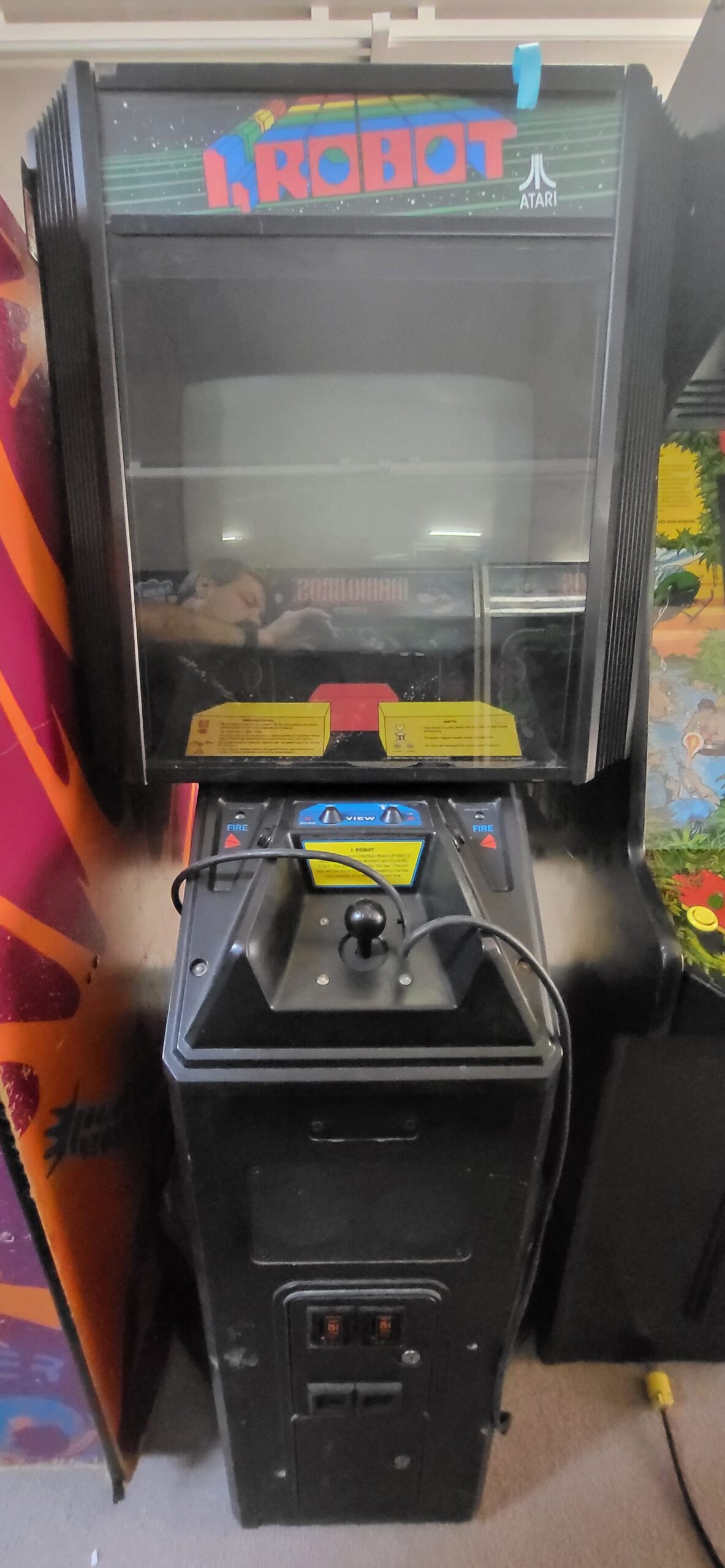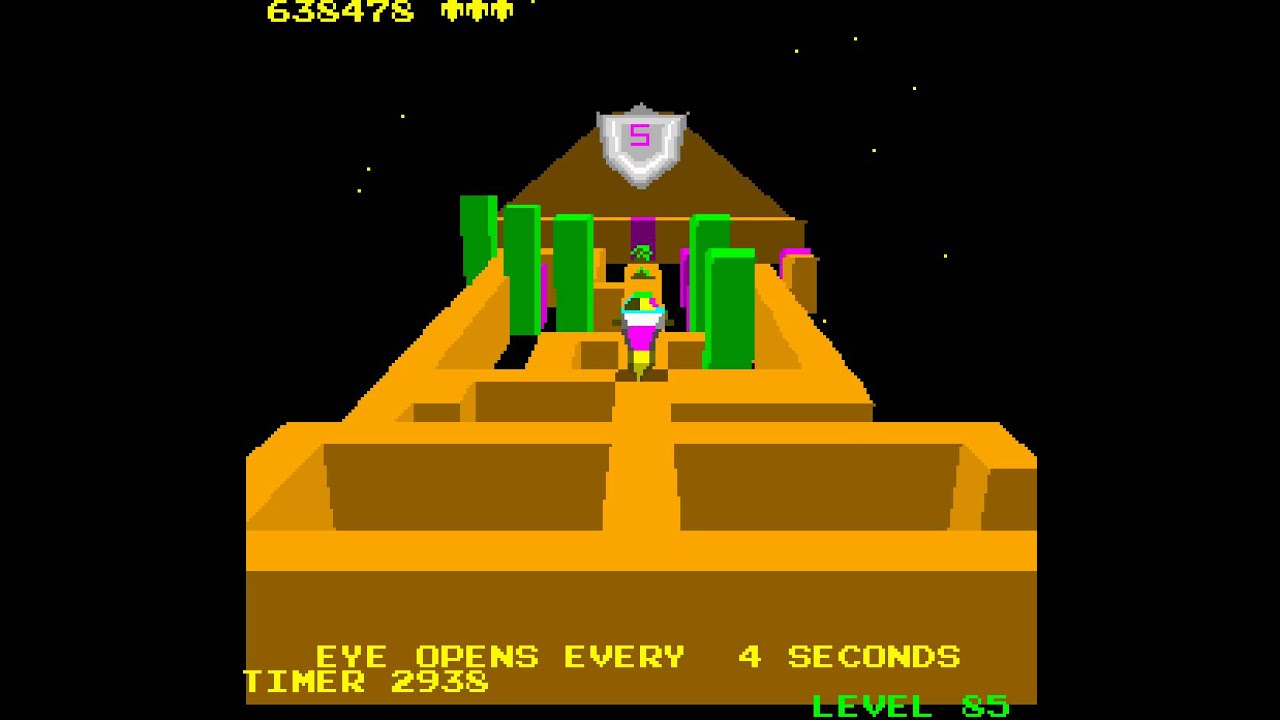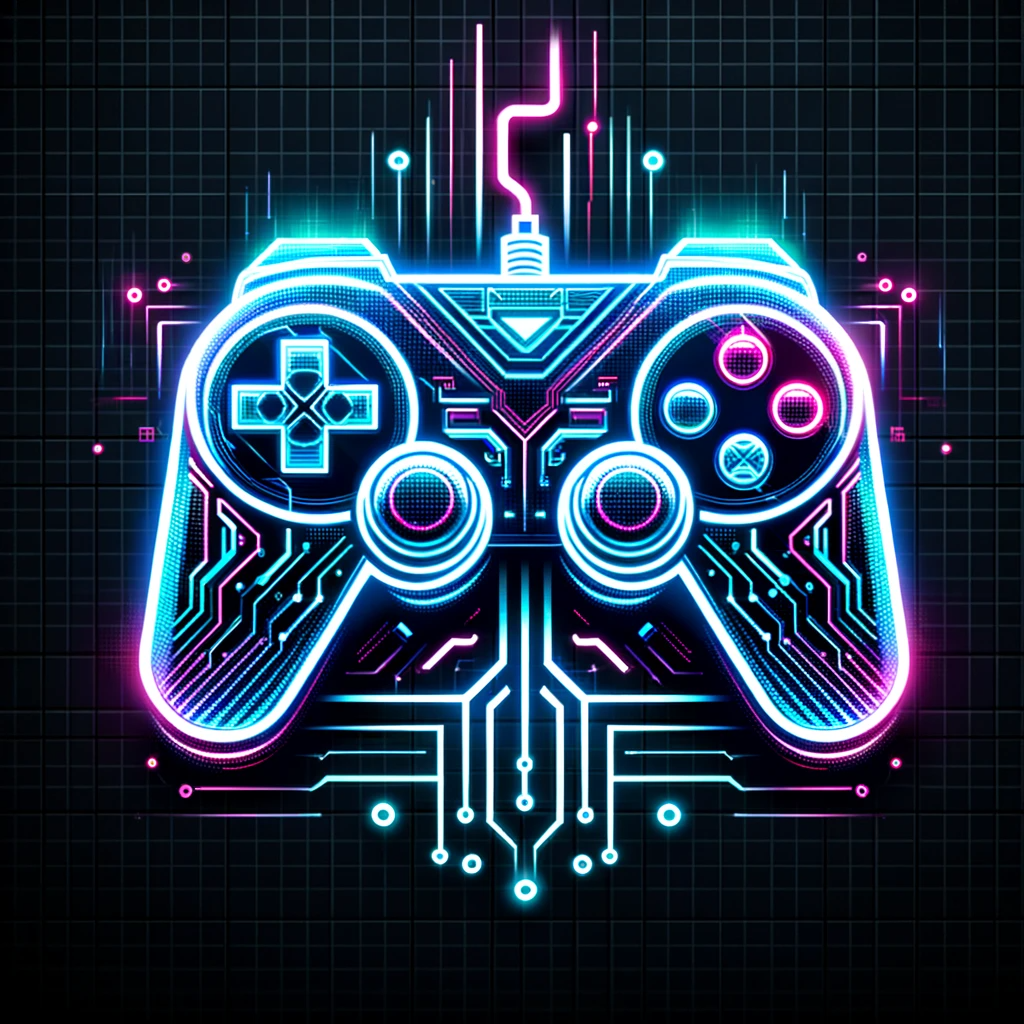
I. Robot
Arcade / Atari, Inc. 1983
I, Robot is an arcade game developed and released by Atari, Inc. in 1983. It is a unique blend of platforming and puzzle-solving gameplay set within a futuristic environment. Players control a humanoid character navigating through a series of geometrically shaped levels filled with obstacles and enemies. The game’s objective is to clear each level by painting every surface within a given time limit while avoiding hazards and adversaries.
I, Robot was conceived by Dave Theurer, the creator of Atari’s hit game “Tempest.” Theurer aimed to develop a game that utilized 3D vector graphics and incorporated innovative gameplay mechanics. I, Robot was one of the first video games to feature filled 3D polygonal graphics, making it a pioneering title in arcade gaming history. Despite its groundbreaking design, the game faced challenges during development, including technical limitations and hardware constraints.
Upon its release, I, Robot received mixed reviews from critics and players. While praised for its innovative visuals and gameplay concepts, some criticized its steep learning curve and unforgiving difficulty. Despite its relative commercial failure, I, Robot left a lasting impact on the industry, influencing future games with its use of 3D graphics and gameplay mechanics.
I, Robot has no direct sequels or spin-offs, but its influence can be seen in subsequent arcade and video game titles. The game’s unique aesthetic and gameplay elements have inspired developers and designers in the years following its release.
Due to its limited commercial success, I, Robot is considered a rare find among collectors. Estimates suggest that only a few hundred units were produced, making it highly sought after by retro gaming enthusiasts. Depending on condition and working status, a fully functional I, Robot arcade cabinet can fetch prices ranging from several thousand to tens of thousands of dollars in the collector’s market.
The hardware of I, Robot consists of several key components essential for gameplay and functionality. These include:
CPU: Motorola 6809
Sound Chips: POKEY
Display: Vector monitor
Controls: Joystick and buttons
Power Supply Unit
For possible repairs, enthusiasts and technicians may require replacement parts such as:
Replacement joystick and control panel parts
Circuit board components for CPU and sound systems
Ensuring access to these components is crucial for maintaining and restoring I, Robot arcade cabinets to their original working condition.


